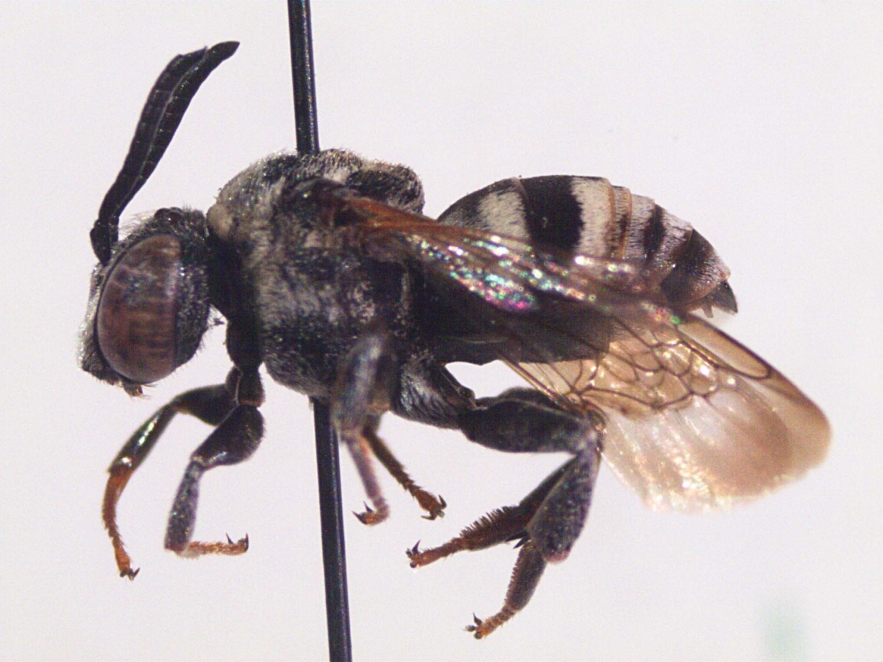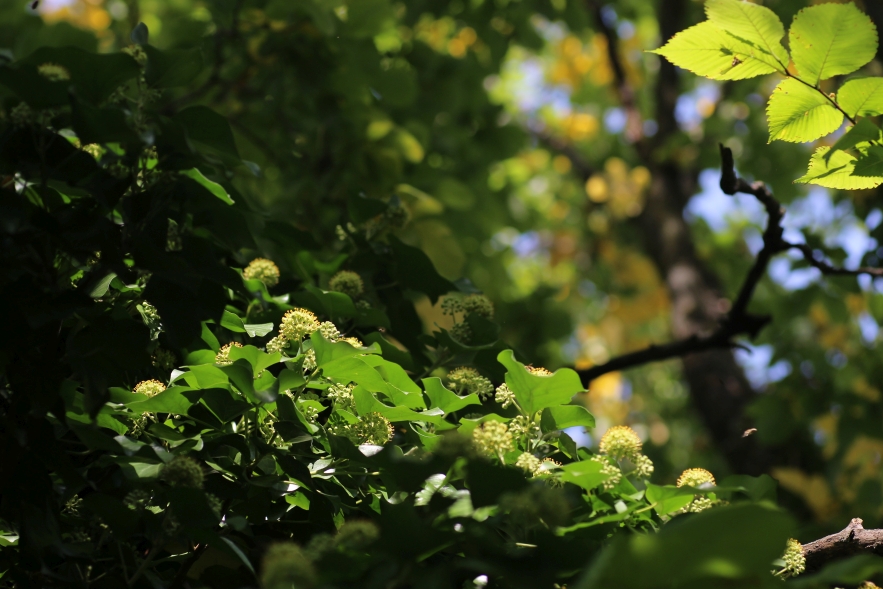Bees of Late Summer
Marek
Semelbauer
The fact that bees are among the most important pollinators, is common knowledge, and the eastern honey bee is the best known of more than 20 thousand species of bees. However, according to current scientific findings, wild bees are usually more effective pollinators than honey bees. In accordance with this fact, various species of bees have become involved in a trade: tomatoes in greenhouses are pollinated by commercially bred buff-tailed bumblebees; melitta leporine are used to pollinate alfalfa; and almond, apple and cherry orchards are pollinated by several Hoplitis adunca species; and the potential of Osmia cornuta and Osmia rufa in the pollination of trees is being studied in Europe (Šlachta a kol. 2022).
Aside from their pollinating activities, many species of bees are endangered. For example, in the Czech Republic up to 14% of all bee species have become extinct, and another almost 20% are threatened by extinction (Straka & Bogusch 2017). According to the European Red List of Bees, approximately 9% of all species of bees are endangered (none has become extinct), but it is quite possible that this figure has been underestimated. Over half of the species have been classified as DD (data deficient). Just for comparison, bumblebees are much better examined (only 9% have been classified as DD) while over one quarter of all species are endangered. Some of the most significant factors causing this decline include the intensification of agriculture and the expansion of cities to surroundings where so-called urban sprawl occurs. Many naturally preserved areas were sacrificed to the expansion of housing developments (Nieto et coll. 2014).
We recorded an interesting species of bee – Epeolus tarsalis (the finding was also confirmed by the Czech bee specialist doc. Mgr. Petr Bogusch, PhD.) in Lido in the 2021 season. Interestingly, this bee is a cuckoo, i.e. she does not create her own food supply, but lays eggs in the hives of other bees. Its occurrence within Europe is even more interesting. The current findings of this species come from Europe’s Atlantic shores, primarily the Netherlands, but in 2017 this species was unexpectedly discovered at Sandberg (NPR Devínska Kobyla, national nature reserve) near Bratislava (Bogusch & Hadrava 2018). All other Central European findings are over half a century old!


Epeolus tarsalis female
All of the species of the Epeolus genus use bees of Colletes genus as their hosts. They are medium size sympathetic bees that nest alone in the ground. Epeolus tarsalis uses the aster mining bee (Colletes halophilus) and Colletes collaris as its hosts and these species are associated with saltmarsh and coastal habitats. However, both species of Colletes have completely disappeared from inland saltmarshes, and the second species most probably from all of Europe. Thus, Epeolus tarsalis, one of the most precious bees in Europe, is in serious danger of extinction on the continent (Bogusch & Hadrava 2018). That is why it would be appropriate to determine which host is used by the population from Lido.


Epeolus tarsalis male
Epeolus tarsalis occurs in late summer and September. Another species, the ivy bee (Colletes hederae) begins to be active at the same time. Females of this species supply cells exclusively by pollen from ivy which begins to bloom at this time. It was identified and described as a new species for science in 1993 – surprisingly late, partially due to her late flying thanks to which she has escaped attention. This bee was originally known in Southern Europe, with its northernmost occurrence in southwest Germany. However, in course of the past years Colletes have begun to move, mainly towards north-west and east; in 2006 it was recorded in Vienna, in 2017 in Bratislava (Devínska Kobyla site) and in 2020 in Mikulov, Southern Moravia. These days, it occurs in every European state to the west of us including Great Britain (Bogusch et coll. 2021). Whether the occurrence of the Epeolus tarsalis species is related to presence of the ivy bee must be confirmed by research. For now, we can at least state that the recent finding of Epeolus tarsalisand Colletes hederae species at Sandberg obviously coincide in time.

Colletes hederae



Colletes hederae
And how did the inspection of Lido in the 2022 season end? Well – both species occur here. We recorded four individuals of E. tarsalis, practically on the same spot as last year. This is a significant finding, since it confirmed that E. tarsalis seems to have a stable population here. Its potential host, the ivy bee, also occurs here on blooming ivy. In order to prove the relationship between both species, it will be necessary to find the ivy bee’s nesting colony and determine whether E. tarsalis tries to get into one of its cells. Since sites with the occurrence of E. tarsalis from Central Europe are very scarce (specifically two), Lido may play a significant role in getting to know the biology of this highly rare and endangered species.


Habitat of Epeolus tarsalis

Ivy stands in Lido floodplain forest
Literature
Bogusch, P., & Hadrava, J. (2018). European bees of the genera Epeolus Latreille, 1802 and Triepeolus Robertson, 1901 (Hymenoptera: Apidae: Nomadinae: Epeolini): taxonomy, identification key, distribution, and ecology. Zootaxa, 4437(1), 1-60.
Bogusch, P., Lukáš, J., Šlachta, M., Straka, J., Šima, P., Erhart, J., & Přidal, A. (2021). The spread of Colletes hederae Schmidt & Westrich, 1993 a continuation of the first records of this plasterer bee species from Slovakia and the Czech Republic. Biodiversity Data Journal, 9.
Nieto, A., Roberts, S.P.M., Kemp, J., Rasmont, P., Kuhlmann, M., García Criado, M., Biesmeijer, J.C., Bogusch, P., Dathe, H.H., De la Rúa, P., De Meulemeester, T., Dehon, M., Dewulf, A., Ortiz-Sánchez, F.J., Lhomme, P., Pauly, A., Potts, S.G., Praz, C., Quaranta, M., Radchenko, V.G., Scheuchl, E., Smit, J., Straka, J., Terzo, M., Tomozii, B., Window, J. and Michez, D. 2014. European Red List of bees. Luxembourg: Publication Office of the European Union.
Straka, J. & Bogusch, P. Anthopila (včely). In: Hejda, R., Farkač, J. & Chobot, K. [eds.] (2017): Červený seznam ohrožených druhú České republiky. Bezobratlí (Red List of threatened species of the Czech Republic. Invertebrates). – Příroda, Praha, 36, 1-612.
Šlachta, M., Votavová, A., Erban, T., Cudlín, O., & Cudlín, P. (2022). Breeding mason bees for the pollination of fruit orchards in Central Europe. European Journal of Environmental Sciences, 12(1), 16-20.
Mgr. Marek Semelbauer, PhD. Is a researcher at the Institute of Zoology of the Slovak Academy of Sciences in Bratislava. He studies faunistics, Diptera morphology and ecology and has spent many years working on various environmental topics, in particular, the conservation of non-forest biotopes.